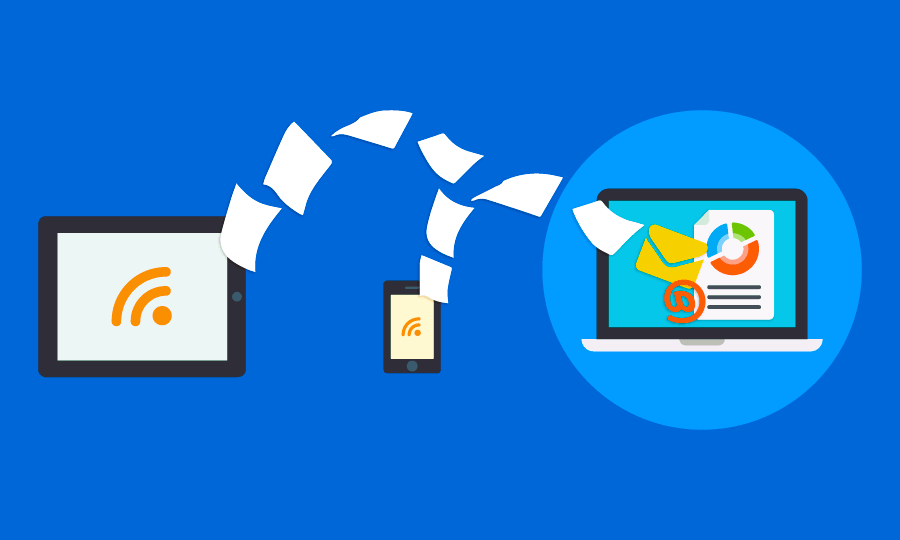In the ever-evolving landscape of digital marketing, staying ahead of the curve is essential for businesses looking to engage with their audience and drive conversions effectively. Two powerful tools that have proven to be instrumental in this endeavor are RSS (Really Simple Syndication) and email marketing. While each tool offers distinct advantages on its own, integrating RSS and email marketing can create a synergistic approach that enhances audience engagement, increases brand visibility, and drives business results. In this article, we’ll explore the benefits of integrating RSS and email marketing and examine strategies for maximizing their effectiveness.
Understanding RSS and Email Marketing:
RSS, or Really Simple Syndication, is a standardized format for delivering web content such as blog posts, news articles, and podcasts in a structured and machine-readable format. RSS feeds allow users to subscribe to their favorite websites and receive updates automatically whenever new content is published. On the other hand, email marketing involves sending targeted messages, promotions, and newsletters to a list of subscribers via email. While RSS feeds provide a way to deliver content updates to subscribers, email marketing offers a more personalized and direct communication channel with subscribers.
Benefits of Integrating RSS and Email Marketing:

- Automated Content Updates: By integrating RSS feeds with email marketing platforms, businesses can automate the process of delivering content updates to subscribers via email. Instead of manually composing and sending emails every time new content is published, businesses can set up automated RSS-to-email campaigns that deliver content updates to subscribers automatically, saving time and resources.
- Increased Engagement: Email marketing allows businesses to deliver personalized and targeted messages to their subscribers, increasing the likelihood of engagement and interaction. By combining RSS feeds with email marketing, businesses can deliver relevant content updates directly to subscribers’ inboxes, encouraging them to click through to the website and engage with the content further.
- Enhanced Brand Visibility: By regularly sending content updates and newsletters to subscribers via email, businesses can increase their brand visibility and reinforce their brand identity. Integrating RSS feeds with email marketing allows businesses to maintain a consistent presence in subscribers’ inboxes, keeping their brand top-of-mind and increasing the likelihood of future engagement and conversions. Learn more about RSS conversion tools in our article.
- Improved Segmentation and Targeting: Email marketing platforms offer robust segmentation and targeting capabilities, allowing businesses to tailor their messages to specific audience segments based on demographics, interests, and behavior. By integrating RSS feeds with email marketing, businesses can segment their subscribers based on their interests and preferences, delivering targeted content updates that resonate with each segment.
- Measurable Results: Email marketing platforms provide detailed analytics and reporting features that allow businesses to track the performance of their email campaigns in real-time. By integrating RSS feeds with email marketing, businesses can track metrics such as open rates, click-through rates, and conversions, gaining valuable insights into the effectiveness of their content and optimizing future campaigns for better results.
Strategies for Integrating RSS and Email Marketing:
- Set up Automated RSS-to-Email Campaigns: Use an email marketing platform that supports RSS-to-email integration to set up automated campaigns that deliver content updates to subscribers whenever new content is published on your website or blog.
- Personalize Content Recommendations: Segment your email list based on subscriber interests and preferences, and personalize content recommendations in your emails based on each segment’s preferences. Use dynamic content blocks to tailor content updates to each subscriber’s interests, increasing engagement and click-through rates.
- Optimize Email Design and Formatting: Ensure that your emails are optimized for readability and visual appeal by using responsive design principles, clear call-to-action buttons, and compelling visuals. Use email testing tools to preview your emails across different devices and email clients to ensure a consistent user experience.
- Monitor and Analyze Performance: Track key metrics such as open rates, click-through rates, and conversions for your RSS-to-email campaigns, and use this data to refine your email marketing strategy over time. Experiment with different subject lines, send times, and content formats to identify what resonates best with your audience.
- Encourage Subscriptions and Engagement: Promote your email newsletter and RSS feed subscriptions across your website, blog, and social media channels to encourage new sign-ups. Use incentives such as exclusive content or discounts to incentivize subscriptions and encourage engagement with your emails.

Conclusion:
In conclusion, integrating RSS and email marketing offers businesses a powerful strategy for delivering content updates, engaging with subscribers, and driving conversions. By automating content delivery, personalizing content recommendations, and optimizing email design and formatting, businesses can maximize the effectiveness of their email marketing efforts and achieve better results. By leveraging the combined power of RSS and email marketing, businesses can enhance audience engagement, increase brand visibility, and drive business growth.
For further insights into integrating RSS and email marketing, please visit Wikipedia for additional information.


